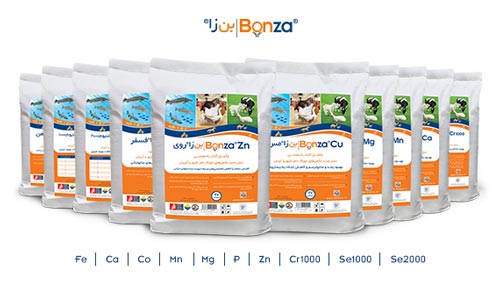Bonza-Fe, Bonza-Zn, Bonza-Mn, Bonza-Cu, Bonza-Se1000, Bonza-Se2000, Bonza-Cr1000, Bonza-Co, Bonza-Ca, Bonza-Mg and Bonza-P are livestock, poultry, and aquaculture chelated mineral feed supplements manufactured using Sodour Ahrar Shargh Knowledge-Based Company’s “advanced Chelate Compounds technology,” and like all products manufactured using this technology, it has the feature of metabolism optimizer (balancing metabolism).
Composition


